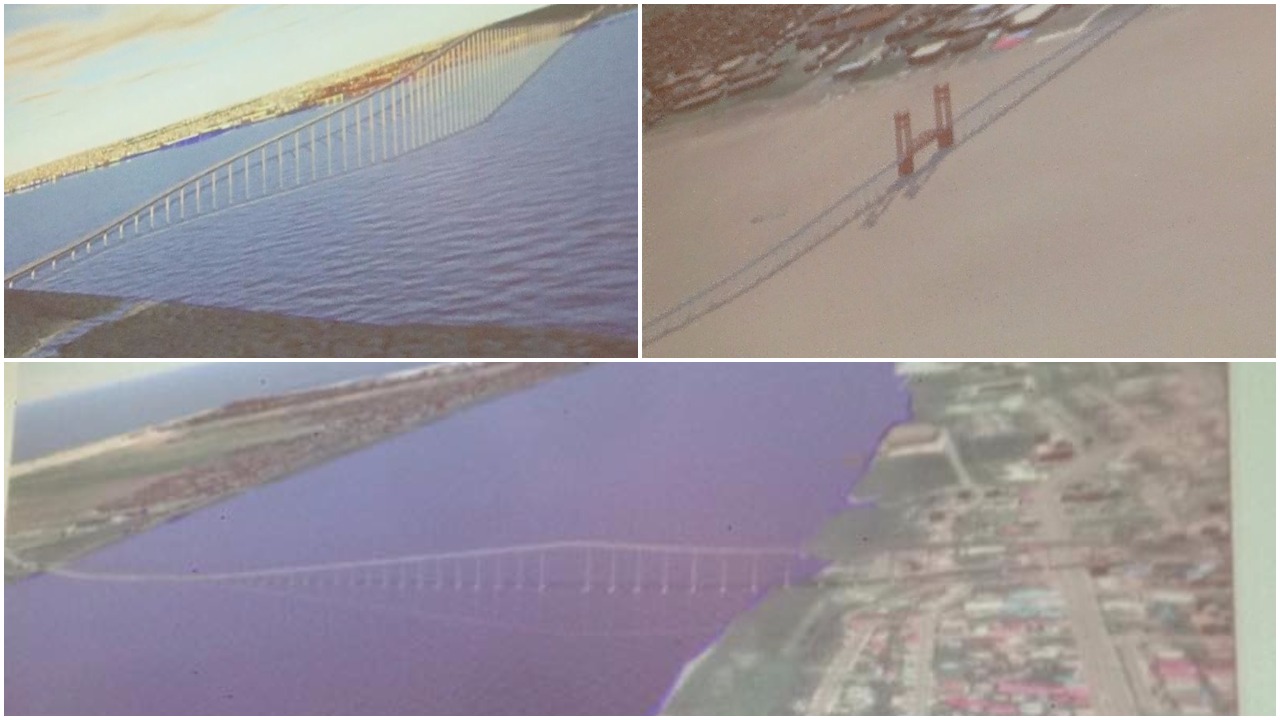Stakeholders were today (April 12, 2017) given the opportunity to contribute to the design and location of the New Demerara River Crossing.
On Wednesday, the models being looked at were shown to representatives of the Caribbean Development Bank (CDB), the Private Sector Commission (PSC), and many other Stakeholders who attended the half-day session at the Pegasus Hotel in Georgetown.

The first phase of the feasibility study for the new Demerara River crossing has been completed by Dutch Company, LievenseCSO and it was disclosed that New Hope-Lorentia Catherina, Peter’s Hall- Meer Zorgen, Houston- Versailles and Eccles, were the locations earmarked for consideration for the new crossing. The length of the new bridge will range from approximately 580 metres to just under 2,000 metres.

One of the major concerns is the acquisition of land which will have to be done by the Government. However, Minister of Public Infrastructure, David Patterson told media operatives that “whichever scenario we choose, we may have to take some private lands and some state-owned lands to reuse it, and this is primarily for the road network.” He, however, promised that “anyone who may loose home or property that may be affected, we will definitely have consultations with them whenever that final decision is made.”

Leader of the Dutch team, Arie Mol noted that the options are; a floating bridge, a fixed low-level bridge with a retractable span or a fixed high-level bridge. He told those gathered that the team also looked at a tunnel version of the crossing, however it was eliminated since it is “2 and ½ to three times more expensive per kilometer over a bridge, 30% of the cost are installations which have to maintained and replaced within 15 to 20 years” and when something is damaged, it will be out of operation for a long time.

The Private Sector raised concerns with river transport which was adequately addressed.
It was noted that the High Bridge which was identified for the Peter’s Hall Location will extend over the east bank road, to ensure that traffic from Georgetown to other areas on the East Bank are not affected. The highest part of the Bridge which will stand at 50 metres will be left with an opening for the passage of ships.
The floating bridge will also extend across the road on both sides, on the West Bank and East Bank of Demerara.

The fixed low-level bridge is one equipped with a retractable span in the center, much like the current Demerara Harbour Bridge.
The bridge will be equipped with three lanes with the middle lane being interchangeable at different times of the day. Many persons who utilise the Demerara Harbour Bridge on a daily basis will know that currently one-way traffic from the West Demerara region to Georgetown is given priority in the mornings while traffic flowing in the other direction is given priority at certain times in the afternoon to accommodate the Region three residents.
But according to the Consultants, while the new bridge will improve traffic flow, it is not one of the major problems that need addressing, but the current road network.

Traffic Expert Jacqueline Mouws noted that there is need also to address the road system in the greater Georgetown area. She pointed out that the traffic problem on the bridge “clearly showed that the main cause of problems in the morning is due to the fact that there is only one road going from the South into Georgetown. That is the main problem. So all the traffic, all the developmental work happening in the south got to use that one road to come into Georgetown and then you also come from the Bridge from that same one road.”

One person raised the possibility of the new crossing extending onto new roads. However, the Traffic Expert noted that it is important to ensure that direct access is not given to new roads as they will soon lose their function of being an alternative. She also noted that it would also cost more.
A representative from the Caribbean Development Bank (CDB) asked whether the current bridge tolls will remain the same to which Mouws answered in the positive.
She also noted that based on projections, a second bridge would be needed in approximately 10 to 15 years of the first, providing that the country’s growth remains consistent.
The contract for the feasibility study and design was signed on Friday, December 9, 2016, with the Dutch company. The study commenced on January 15, 2017, and will take a period of six months to be completed.
The current Demerara River crossing which is 1.5 miles long was officially opened in July 1978.












